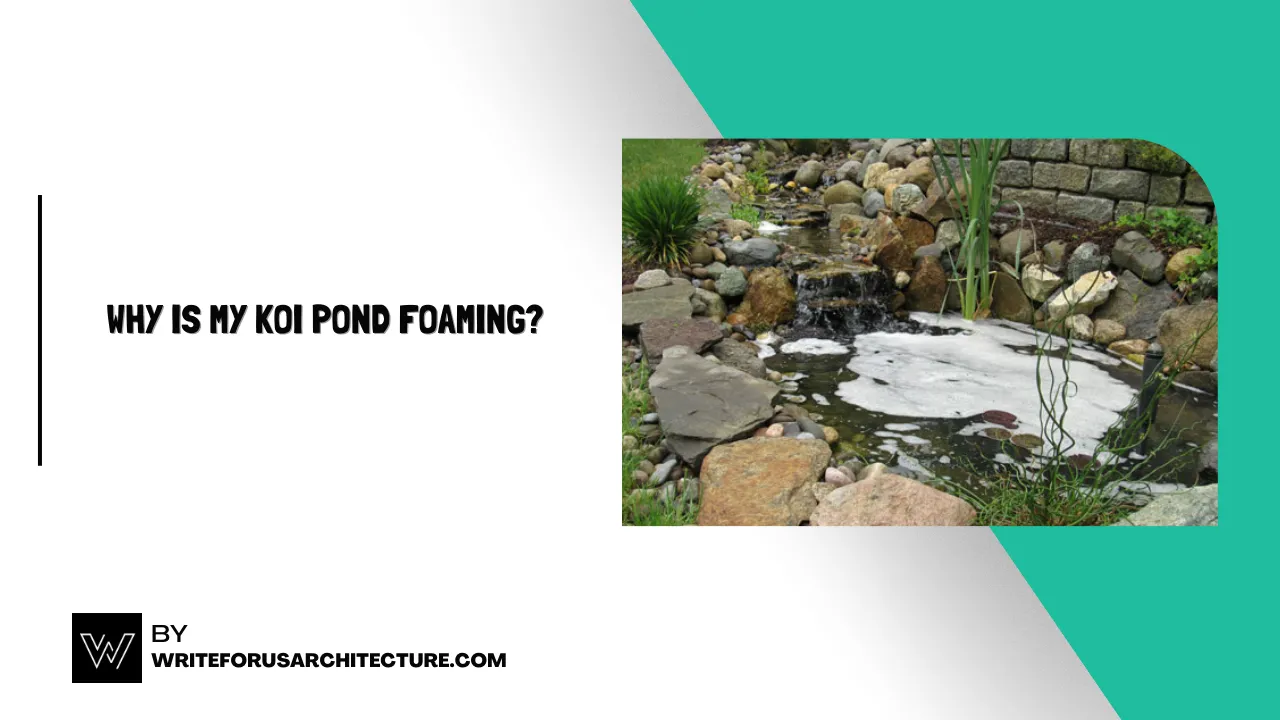Let’s be honest here for a second! Everyone who’s had a pond or a freshwater aquarium has seen a bit of foam or debris forming in it and has freaked out a bit.
I remember this one time, someone I was visiting had this lovely indoor pond with a small fountain, and I thought these pretty, colorful fishes(there were some koi fish, cherry barb, silver orfe, and some goldfish, but I didn’t know what they were at the time) were having a hard time breathing due to the water looking foamy.
When I mentioned it to someone who was working there(I think?) they almost laughed at me and said that to a certain degree that was a normal thing that happens.
So, now that I know that it is normal (to some extent), let’s take a look at when we should let nature do its things and when to intervene.
What is a Koi Pond?
If you’re reading this article, you probably already know what it is, but let me explain if you’re only reading for fun. Koi pond is a body of water that is built to raise koi fish, but it is also suitable for other fishes like goldfish, catfish, and more. Koi is an ornamental carp fish that adds a vibrant color pop to the waterbody they live in. The pond can be installed both indoors and outdoors, and it is at least three feet deep, it can go up to seven feet deep.
It is better for the pond to be deeper than four feet if you live in places that get cold during winter. This ensures that the pond stays above 34° Fahrenheit. The water temperature must be between 59° to 77° Fahrenheit during their active period.
A koi pond needs a good quality aeration and filtration system to keep the water clean. Adding aquatic plants, rocks, and other decorative features can add style to the pond.
Why Is There Foam In Koi Pond?
Usually, the surface tension of the water creates a barrier between the air on the surface of the pond which in turn prevents the bubbles from forming. When the barrier breaks, the leaves, fish waste, and other materials dissolve into surfactants, breaking down that surface tension, and the bubbles appear. It can also happen if there is a waterfall in the pond, which can agitate the water, large amounts of air bubbles form, and the pond foams.
But, the foam can be a bit too much, or there’s a bad odor coming from the pond, it might be a sign of some underlying issue with the pond that needs some work.
Signs The Foaming Might Be An Issue
When is the concern called for? One of the reasons why foaming is a threat is when the foam is accompanied by a strong odor. This can indicate an imbalance in the pond’s ecosystem. If the smell isn’t checked out almost immediately, it can lead to dangerous levels of bacteria and algae growth, which is harmful to the fish.
Normally, the foam forms in a thin layer. But if the layer appears thick and there is some discoloration in the water(say, the water is brown or green) make sure to take action. This could be an indication of excessive levels of organic waste and dissolved solids that need to be removed. The discoloration may be because the water quality needs to be regulated immediately.
Also, make sure to check for any unusual behavior from the fish. If they seem lethargic, have difficulty swimming, or any other weird behaviors, it could be caused by the imbalance in the pond’s ecosystem. And the concern that requires immediate attention is when there are dead fish floating in the pond. The water quality could be really poor, or there is a disease outbreak.
FAQs
Planting grass, flowers, and bushes, and placing boulders, grovel, and rocks can frame the pond beautifully, while also preventing small children or pets from accessing the pond unsupervised.
Koi fishes live with other carp species like golden tench and golden orfe, goldfish, and grass carp.
A koi pond needs to be in a location that is under direct sunlight but has plenty of shaded areas for the water temperature to be regulated and to keep the algae under control.
Now, let’s see how we can remove the foam from the pond. Before doing anything to the pond, make sure the underlying issue is found first.
- To keep the foaming at bay, make sure the water quality is good. Regulating the ammonia, nitrite, and nitrate levels will reduce the foaming significantly.
- Overfeeding might be an easily overlooked reason for the foaming. It can lead to excess nutrients in the water. Try avoiding that.
- Adding plants is another easy way to keep the foaming from being excessive.
- Lastly, skimming the pond and regular maintenance is the key. That regulates the foaming, keeping it to a minimum.
These are some key factors that help you check and regulate the pool, keeping it from foaming and making sure the pool always has that fresh look.
Let us know some of the tricks that you do to maintain your pond, or your freshwater aquarium in the comments!
Also Read:

